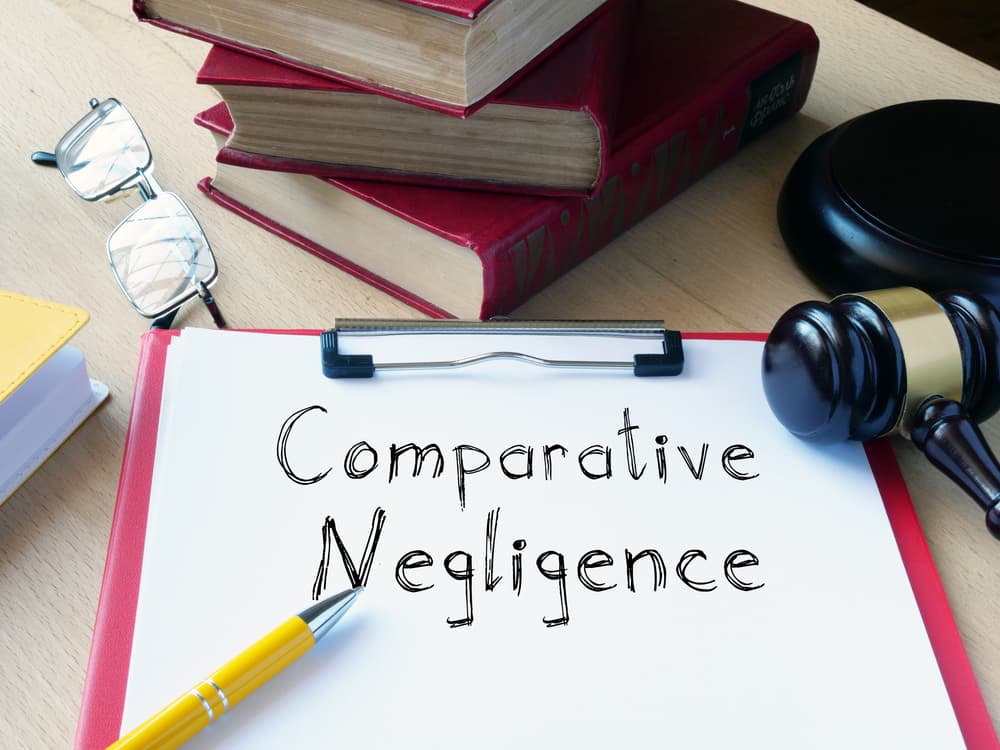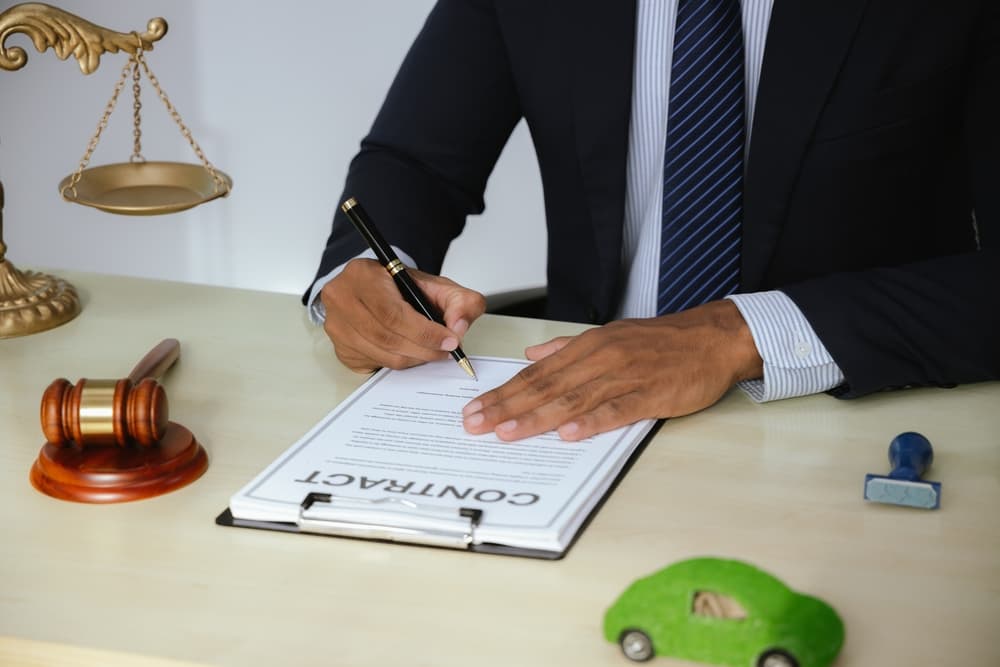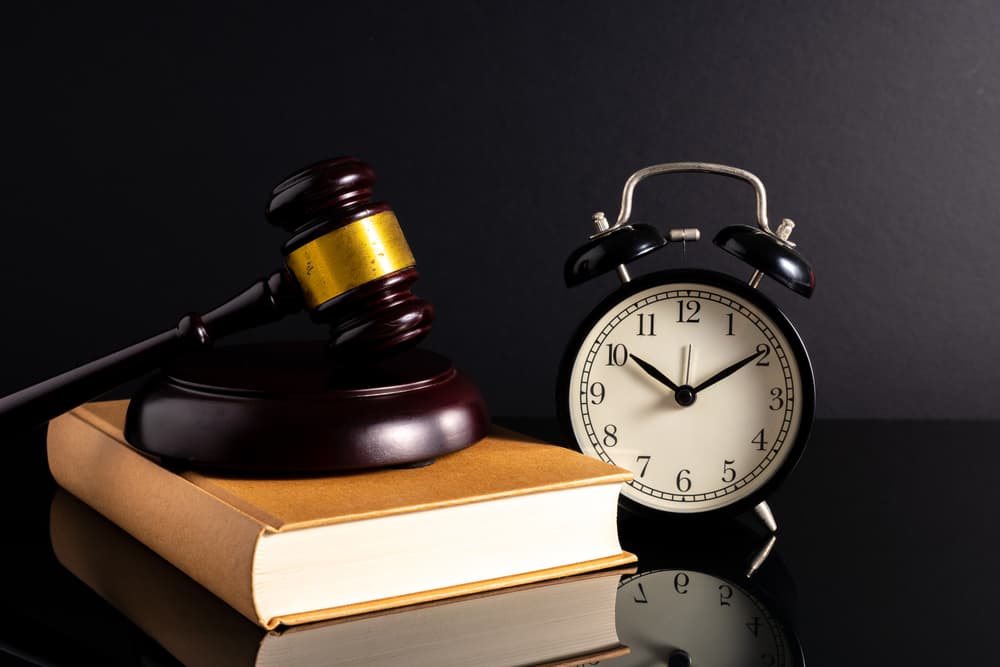You recently sustained injuries in a car accident, and you believe the other driver is mostly at fault. Still, questions linger. Perhaps you were driving over the speed limit or were momentarily distracted just before the crash. Maybe the other driver or their insurance company is trying to place the blame on you.
Whatever the case, you may wonder, “What if I’m partly to blame for my car accident?” It’s a valid question because having any responsibility for the wreck can greatly affect the compensation you receive. In most cases, you can seek damages even when you share fault. However, like any legal area, the answer can become far more complicated depending on the facts and circumstances of your case.
Reaching out to a Tampa car accident lawyer near you for a free consultation is a good way to understand your options. In the meantime, read on to learn what you should know if shared fault might be a factor in your case.
Common Scenarios Where Someone Else May Be Partly to Blame

Fault in a car accident isn’t always black and white. Many crashes involve shared blame between drivers. Understanding these scenarios can help you see how your case might fit.
Speeding While Another Driver Runs a Red Light
Consider this scenario: you’re driving slightly over the speed limit when another driver runs a red light and collides with your car. The other driver clearly broke the law, but your speeding could be considered a contributing factor. Insurance companies may assign partial blame to you, which can affect the outcome of your claim.
Texting While Driving When Rear-Ended
Rear-end collisions are usually the fault of the trailing driver. If you were texting while driving and suddenly braked, though, the insurer might argue that your distraction contributed to the accident. This can lead to a shared fault determination, even though the other driver failed to maintain a safe following distance.
Not Using Turn Signals During a Lane Change Collision
Changing lanes without signaling can create confusion for other drivers, especially if traffic is moving quickly. If another vehicle collides with you during the lane change, your failure to use a turn signal could result in partial responsibility, even if the other driver was speeding or didn’t yield appropriately.
Driving With Broken Tail Lights When Hit From Behind
If another car hits you from behind, they’re often presumed at fault. However, if your tail lights weren’t functioning, the other driver may argue that they couldn’t see you stopping in time. This could reduce the amount you’re able to recover in a claim.
Understanding Comparative Negligence

Comparative negligence is a legal principle that determines how fault affects compensation in shared responsibility cases. States have different ways of applying this rule.
What Is Comparative Negligence?
Comparative negligence allocates fault between drivers based on their actions leading to the crash. Compensation is then adjusted according to each party’s share of the blame. For instance, if you’re found 20% responsible, your potential recovery might be reduced by that percentage.
Types of Comparative Negligence Systems
States handle comparative negligence in one of three ways:
- Pure Comparative Negligence: Under pure comparative negligence, you can recover compensation even if you’re mostly at fault for the accident. However, your total recovery is reduced by your percentage of fault. For example, if a court determines you’re 70% responsible for a crash and your damages amount to $100,000, you would only receive $30,000.
- Modified Comparative Negligence: Modified comparative negligence allows you to recover damages only if your fault is below a specific threshold, typically 50% or 51%, depending on the state. If your fault equals or exceeds the threshold, you’re barred from recovering compensation. This is the system that Florida uses.
For instance, in a 50% modified comparative negligence state, you must be 49% or less at fault to collect damages. If your fault is 50% or higher, you cannot recover anything. This system ensures that individuals who bear the majority of responsibility don’t receive compensation.
- Contributory Negligence: Contributory negligence is the strictest system. In states that follow this rule, sharing any level of fault—even as little as 1%—prevents you from recovering compensation. This system is rare and is only used in a few states.
How Insurance Companies Determine Fault Percentages

When multiple parties share responsibility for a car accident, insurance companies play a critical role in assigning fault percentages. These determinations directly influence the compensation each party can receive, making it essential to understand how insurers evaluate shared fault.
Evidence Collection and Evaluation
Insurance adjusters rely heavily on evidence to understand what happened during an accident. They gather various forms of documentation, including:
- Photos and Videos: Images of vehicle damage, skid marks, and road conditions help recreate the crash scene.
- Dashcam Footage: Videos can provide a real-time view of the events leading up to the collision.
- Accident Reconstruction: In some cases, experts may analyze the crash dynamics to determine how each driver’s actions contributed.
This evidence serves as the foundation for assigning fault percentages.
Role of Police Reports and Witness Statements
Police reports are often a key piece of evidence in determining fault. These reports typically include:
- Descriptions of the accident
- Citations issued for traffic violations
- The officer’s opinion on what caused the crash
Witness statements also play a significant role. Neutral third parties who saw the accident can offer unbiased accounts of what happened, which may support or contradict the drivers’ versions of events.
How Adjusters Calculate Fault Percentages
Insurance adjusters analyze all available evidence to calculate fault percentages. They assess each driver’s actions leading up to the crash and compare them to traffic laws and safety standards. Adjusters consider factors such as:
- Speeding: Was either driver exceeding the speed limit?
- Distraction: Did phone records indicate texting or calling at the time of the crash?
- Mechanical Issues: Were vehicle defects, like broken lights, a contributing factor?
Adjusters use this information to assign a percentage of fault to each party. For example, if one driver ran a red light but the other was speeding, fault might be divided 80/20 or another ratio that reflects the circumstances.
Effect on Settlement Amounts
As mentioned, fault percentages directly affect the amount of compensation you can recover in states that follow a modified or pure comparative negligence rule. However, insurance companies often assign higher fault percentages to minimize payouts. Disputing these assessments with solid evidence can protect your compensation. An attorney can challenge unfair fault assignments and ensure you’re treated fairly during the claims process.
Steps to Take If You're Partly To Blame For The Car Accident
Even if you think you might share responsibility, taking the right steps after a crash can protect your ability to recover damages.
Document Everything at the Scene
Take photos of the vehicles, road conditions, and any visible injuries. These images can provide valuable evidence when fault is being determined.
Be Careful What You Say
Avoid admitting fault or making statements like “I’m sorry” to other drivers or insurance adjusters. Even innocent remarks can be used against you later.
Seek Medical Attention Promptly
Seeing a doctor soon after the accident not only protects your health but also documents your injuries. Delayed treatment could give insurers an excuse to question the severity of your injuries or argue they weren’t caused by the accident.
Contact an Attorney Familiar with Comparative Negligence
An attorney experienced in shared fault cases can review your situation, gather evidence, and help challenge any fault assignment that seems unfair. They can also handle negotiations with insurers, so you’re not stuck fighting them alone.
How Legal Representation Can Help

Legal assistance often makes a significant difference in shared fault cases. Here’s how having an attorney on your side can benefit you.
Challenging Unfair Fault Assignments
Insurance companies may try to assign more blame to you than is warranted to reduce their payout. Your attorney can gather evidence to counter these claims and argue for a more accurate fault determination.
Maximizing Compensation Despite Partial Fault
Even if you share responsibility, an attorney can work to ensure you recover the maximum amount possible under the circumstances. They’ll focus on proving the other party’s negligence and minimizing your share of the fault.
Negotiating With Insurance Companies
Dealing with insurers can feel like an uphill battle. An attorney can handle all communication, pushing back against lowball offers and fighting for fair compensation.
Building a Strong Case With Available Evidence
Your attorney will gather police reports, witness statements, expert opinions, and other evidence to support your claim. A well-documented case strengthens your position during negotiations or in court.
Time Limits and Legal Considerations

Car accident claims are subject to strict deadlines and legal rules. Acting promptly helps ensure you don’t lose your right to seek compensation.
Statute of Limitations
Each state imposes a time limit for injured parties to file personal injury lawsuits. For example, Florida’s statute of limitations gives you two years from the date of the accident to file a lawsuit. Claims against government entities usually have far shorter deadlines and a lot of red tape to cut through, so you must contact an attorney immediately if you feel a government employee caused the crash.
Missing any legal deadline could bar you from recovering damages, so you need to act quickly and contact an attorney to start your case. An attorney can also help you determine whether your case qualifies for extensions to file.
Impact of Delayed Action
Delays can make it harder for your attorney to gather evidence, locate witnesses, and build a strong case. Insurance companies may also argue that your injuries aren’t serious if you wait too long to seek medical treatment and act on your claim.
Importance of Prompt Legal Action
Reaching out to an attorney soon after the crash ensures you understand your rights and have someone advocating for your interests from the start. Your lawyer can assist in collecting evidence, deposing witnesses, accessing expert resources, and building a strong claim for you.
Let Hancock Injury Attorneys Help
When partial fault complicates your car accident claim, having the right legal team makes a difference. Hancock Injury Attorneys have extensive experience helping Florida clients recover compensation in shared fault cases. We understand the state’s comparative negligence laws and know how to fight for the compensation you deserve.
If you suffered injuries or losses in a car crash and feel another party is mostly to blame, don’t wait. Contact Hancock Injury Attorneys today for a free consultation. Let us help you take the next step toward recovering from the crash and securing the financial support you need.